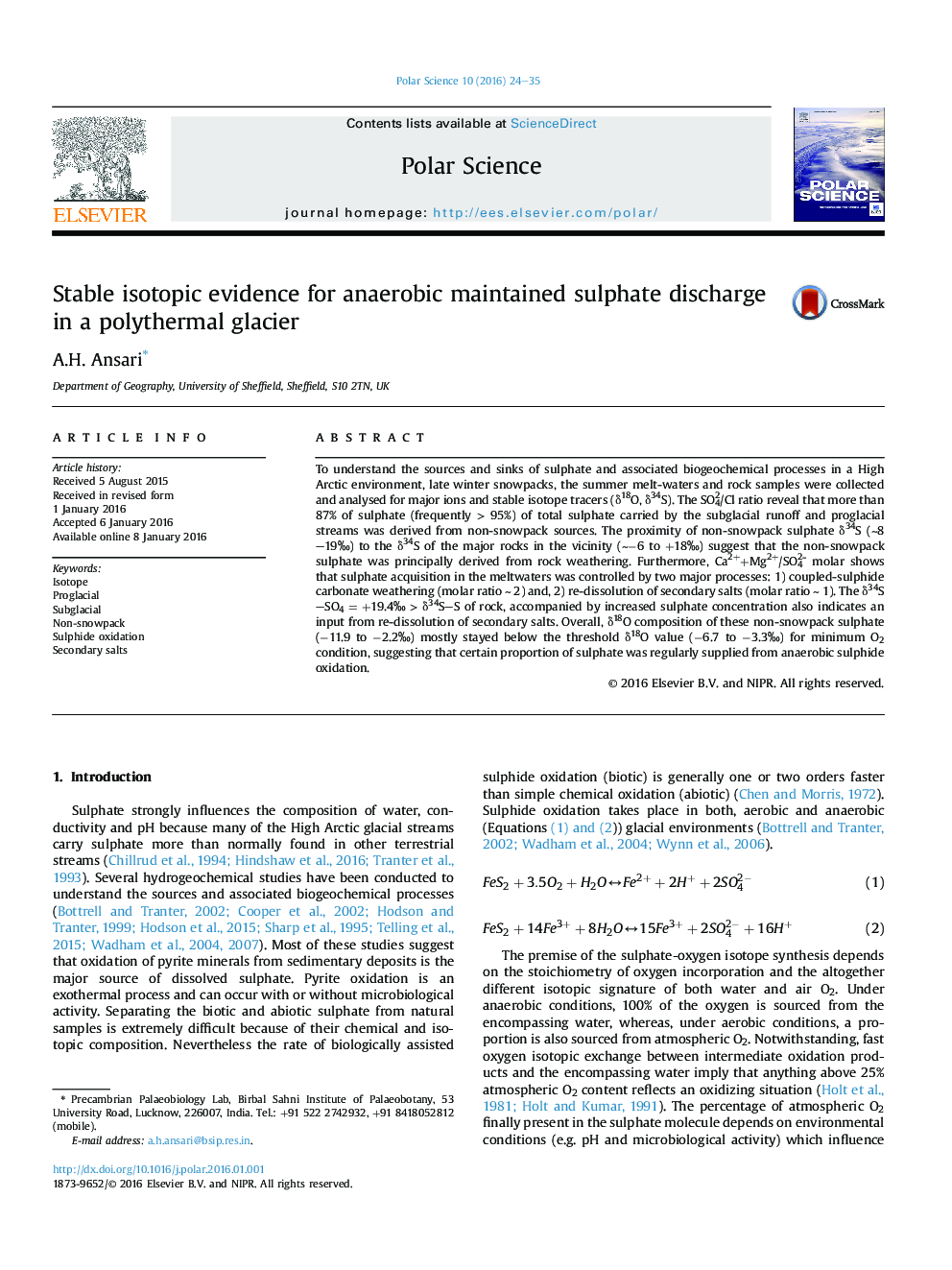| Article ID | Journal | Published Year | Pages | File Type |
|---|---|---|---|---|
| 4683186 | Polar Science | 2016 | 12 Pages |
To understand the sources and sinks of sulphate and associated biogeochemical processes in a High Arctic environment, late winter snowpacks, the summer melt-waters and rock samples were collected and analysed for major ions and stable isotope tracers (δ18O, δ34S). The SO42¯/Cl¯ ratio reveal that more than 87% of sulphate (frequently > 95%) of total sulphate carried by the subglacial runoff and proglacial streams was derived from non-snowpack sources. The proximity of non-snowpack sulphate δ34S (∼8–19‰) to the δ34S of the major rocks in the vicinity (∼−6 to +18‰) suggest that the non-snowpack sulphate was principally derived from rock weathering. Furthermore, Ca2++Mg2+/SO42ˉ molar shows that sulphate acquisition in the meltwaters was controlled by two major processes: 1) coupled-sulphide carbonate weathering (molar ratio ∼ 2) and, 2) re-dissolution of secondary salts (molar ratio ∼ 1). The δ34S–SO4 = +19.4‰ > δ34S–S of rock, accompanied by increased sulphate concentration also indicates an input from re-dissolution of secondary salts. Overall, δ18O composition of these non-snowpack sulphate (−11.9 to −2.2‰) mostly stayed below the threshold δ18O value (−6.7 to −3.3‰) for minimum O2 condition, suggesting that certain proportion of sulphate was regularly supplied from anaerobic sulphide oxidation.
